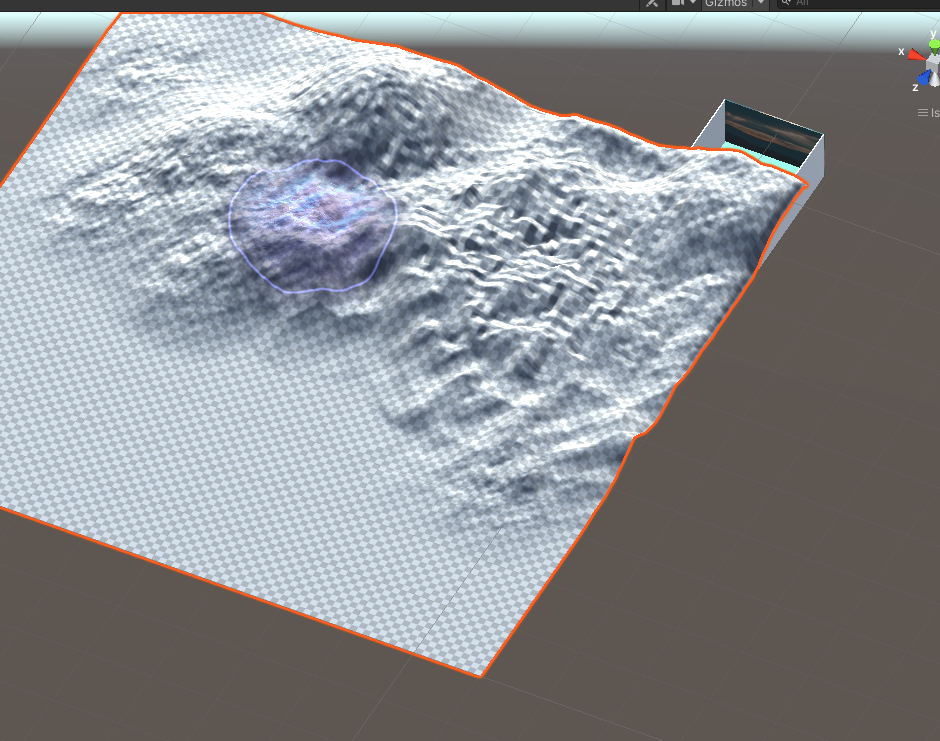Final Project: Cornell Box
Plants Surviving in Unlikely Circumstances
June and I were excited by the idea of introducing people to plants that had amazing survival adaptations. The original idea was to have a door with a dial on the wall next to it that could tune to different worlds. The user could spin the dial, open the door and be greeted by a different universe. We discussed what these worlds could be and started talking about nature and plants. June mentioned survival as a nice unifying message. I was reminded of a tree I saw in Zion National Park:
My photo from Zion National Park.
I was drawn to this tree not because it was beautiful or grand, but because it had the audacity to grow straight through rock, and it was rewarded with the most beautiful view. We talked about the climates and surroundings of these trees with impressive survival skills and wanted to focus on recreating not only the plants themselves, but their climate.
We decided on 3 plants:
Ohia Lehua- the first plant to grow through lava floes in Hawaii
The Great Basin bristlecone pine tree, specifically Methuselah, the oldest known living tree at almost 5,000 years old
The flowers that bloom in the Atacama desert, the driest place on earth.
We wanted to display these plants as a presentation “sampler” of plants that one might choose to bring if colonizing a new planet because of their survival capabilities. Giving each box it’s own microclimate and terrain was challenging. The built-in terrain feature automatically makes one massive terrain and it took us many different attempts and different plugins to make three seperate, small terrains. Here are some pictures of our progress on the terrain:




Methuselah is not a normal looking tree, and I couldn’t any assets that did her justice. So I decided to create her from scratch using the built in tree function in Unity. I make her by adjusting multiple different tree assets and warping the branches.
Methuselah in her secret location in California
We had some fun with the particle system to make the scenes more lively. For methuselah, I added dainty light particles floating around to add movement because this scene was the least animated. The background video surrounding the tree is of the sky turning from day to night, showing the passage of time. We also used the particle system to show the extremely rare rain event in the Atacama prompting the blooming of the flowers. It was a bit of a challenge getting the rain to look as powerful as we wanted it to, and there were so many settings for the particle system it was hard to find any specific feature you were hoping to adjust.
We spent a long time problem solving how to make the flowers bloom. Because it is supposed to be a vast field of flowers, it was impractical to take the same method as for the lava plants (just making the asset super small and then animating it getting bigger.) So we found a texture that allowed us to paint a whole field of flowers onto a terrain, and even included an animation of the flowers swaying in the breeze. We then hid it underneath the desert terrain and animated it to move upwards after the rain started. For the actually recording of the video I moved it up manually because it was difficult timing all of the boxes with their different animations.
The bloomed flowers, with the compartment underneath visible.
The flowers underneath the terrain.
For the lava, we explored several methods of making lava flow on the ground before coming up with a work-around. We raised some of the terrain to give rocky texture but left some flat, and then played a video of lava flowing underneath.
The terrain on build mode, showing the plane with the video showing through in spots.
With the video of the lava playing.
Because this was my first time working in Unity, it was great practice to come up with creative solutions to technical problems. Instead of getting fixated on executing something in the first way I thought to, I instead had to come up with more efficient ways to accomplish a similar effect. I spent a lot of time thinking about impact for this project- whether the amount of time I’d have to spend on something to make it work would improve the experience of the final result enough to make it worth it. For example, I spent 5 hours building the Methuselah model because it was the focal point, and nothing I found looked like it was a 5,000 year old tree. The lava on the other hand, I could’ve spent a whole day trying to make lava flow down the volcano, but I decided this was a time to find a work around that would still be effective and visually impactful.
Here’s a video showing the final product:








